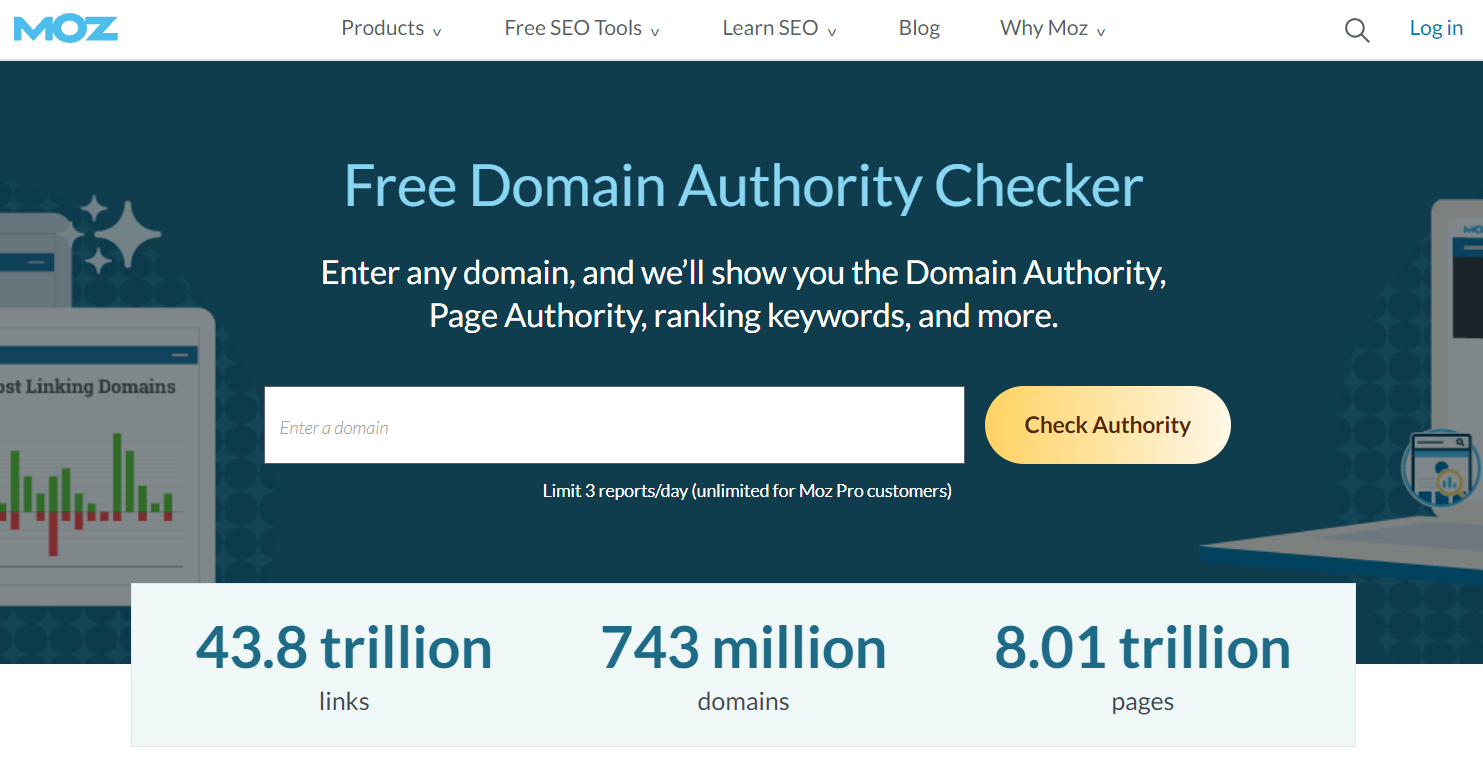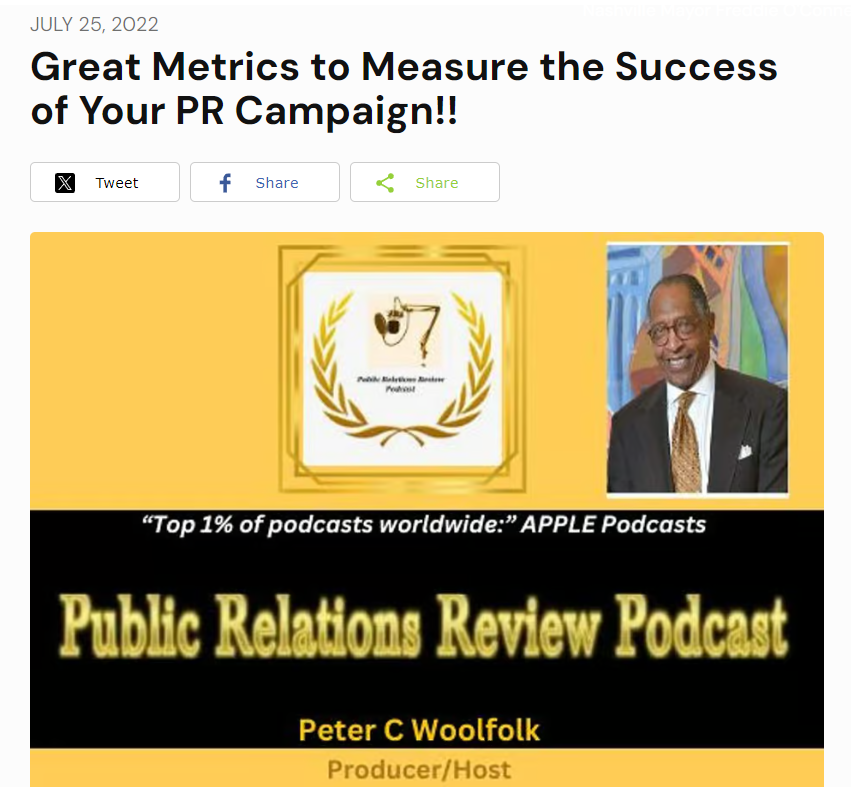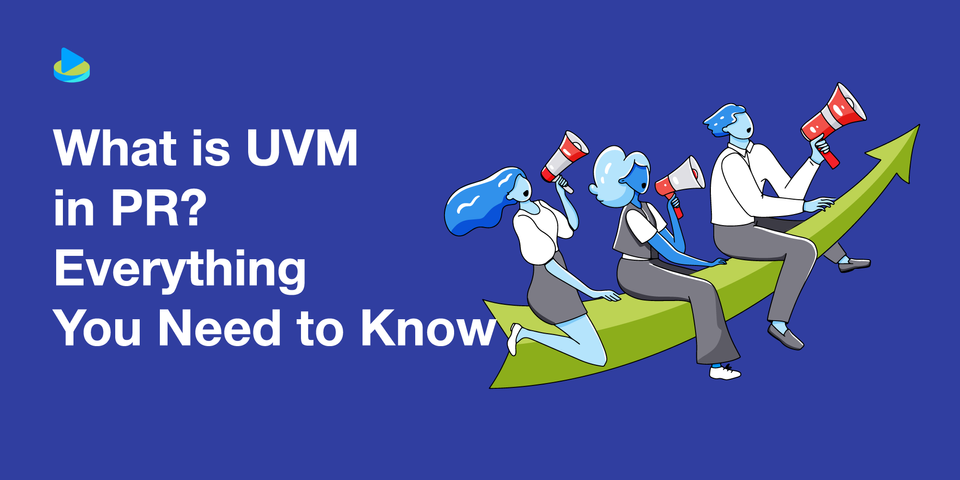It's so tempting to evaluate PR success by the numbers!
How many media hits...how many readers...how many press releases each month...how many visitors check out each site... Big numbers look great in your report and the c suite bosses often lap them up.
But do those numbers give meaningful insights into how your PR story affected the audience? Do they tell you how sentiment changed or what people did as a result?
UVM is one of those tempting metrics that are easy to slip into each report. Let's learn what that means in PR terms and what else you should cover in your PR progress report.
Table of Contents
What does UVM mean in PR?
UVM stands for Unique Visitors per Month and is used to show the number of distinct individuals who visit a website or digital platform every month. Someone (or something) may come back multiple times, but only their first visit is recorded in the UVM metrics.
You might also know UVM as domain reach or audience size.
Is UVM the same as impressions?
People often confuse unique monthly visitors with impressions, but they're not the same thing.
Impressions refer to the total number of times each post, article, ad, or other content is displayed to users. Impressions include each display no matter who views it. So, an individual (or a bot) may view the content multiple times, and each time, it is counted as an impression.
Use the impression count to indicate the content's total exposure and the UVM to estimate the website's reach and audience size.
Is UVM the same as Domain Authority?
Domain authority is a search engine ranking score that predicts how well a site will rank on search engine result pages (SERPs), based on factors like backlink profile, quality of content, and overall website strength. You can find most websites' domain authority in this free tool provided by Moz.
Domain authority (DA) can show the quality of your media mentions. Coverage on websites with high DA is more valuable because more people are likely to see and trust the content.

How to calculate UVM
There isn't a simple formula for calculating a website's unique visitor numbers, but they're easy to find via web analytics tools like Google Analytics, Matomo, Mixpanel, Heap, or Hotjar. You can also try third-party SaaS tools like SimilarWeb or SEMrush, which provide insights into a website's traffic, audience behavior and competitive analytics.
These tools track and compile individual users via cookies, IP addresses and device IDs to identify each visitor. They filter out duplicates and combine the results to count each unique visitor once in a month.
Pros of tracking UVM
Measure your audience size: UVM can give a clear picture of how many individual visitors a website has each month. By tracking the data over time you can monitor trends and growth in its visitor numbers.
- Evaluate content popularity: Tracking unique monthly visitors can indicate which content is attracting attention.
- Understand visitor patterns: you might notice peak visiting times or see how popular your PR content is which might guide future strategies.
- Compare and analyze: Use the analytics tools to compare the website's UVM against competitors or industry standards and get a baseline to set realistic goals for audience growth.
- Check SEO impact: Do you notice a change in UVM when you optimize for SEO?
Cons of tracking UVM
Many PR pros believe that UVM tracking only provides a surface-level or vanity metric offering no insights into a visitor's behavior, engagement or demographics. Arguably, those insights are a more integral part of measuring the effectiveness of PR campaigns.
UVM cons include:
- Measurements lack depth: UVM doesn't show how long visitors stayed, which pages they visited or what they did next (i.e., signed up, bought something, left immediately, etc.)
- Emphasize quantity, not quality: There's no point in having tons of visitors if they leave immediately and never return.
- They may not be counting real people: Bots and non-human traffic may slip into the mix if they're not adequately filtered out.
- Short-term focus vs long-term planning: focusing on these surface metrics may lead to reactive strategies rather than planning for sustained growth.
- Chasing the numbers: It's tempting to do everything you can to get the big numbers. But even massive UVMs are no use if the visitors don't represent your target audience.
- UVM meaning changes: Unique visitors per month numbers mean different things to different teams. Advertisers, for example, may use UVM to measure ROI after their paid campaigns, while publishers take advantage of large UMV numbers to sell more ad space. However, it's much harder to measure PR effectiveness through visitor numbers because you have no idea how those visitors reacted to your content.
- UVM measures website visits not content visits: Even if the website gets hundreds of thousands of monthly visitors, UVM won't tell you if any of them read your press release, watched your video or engaged with your content.
Alternative ways to measure your campaign's impact
Understand your PR campaign goals. Then use a variety of KPIs to show progress over time.
Different campaigns will have different focus, For example, "a non-profit may want to look at website traffic and referrals from an earned media piece while a for-profit organization may care more about social engagement."
Sasha Dookhoo, award-winning PR storyteller at Crenshaw Communication.
In the Public Relations Review podcast episode Great Metrics to Measure the Success of Your PR Campaign!! Sasha suggests five KPIs to measure PR success for your organization.
Track earned media mentions
What coverage are you getting from articles (both online and in print), podcasts, news media and so on? Use tools like Propel, Signal AI or Meltwater to help you measure your coverage. Are you building media awareness, visibility, and brand credibility?
Consider potential reach
Look at all the information and possibilities. You can measure potential reach from social media, email campaigns, physical or online events like seminars or webinars and media outlets, as well as website numbers.
Measure share of voice
This is your overall media coverage, including earned and paid media reports. Check coverage for your brand and your competitors. Share of voice is a great measurement to use because over time, it shows whether your "slice of the media coverage pie" is increasing, decreasing or remaining static.
Look at website traffic and referrals
Check the analytics and track backlinks - especially those from sites with high domain authority. Identify where your website traffic is coming from (e.g., organic search, direct, referral, social media outlets etc.) Check your bounce rate (percentage of visitors who leave after viewing only one page) and conversion rate (percentage of visitors who sign up, buy etc.)
Measure social media engagement
Measure your content's engagement levels(how much people share and comment). Are you getting the word out there and creating visibility? Increased social engagement and follower growth over the months can indicate that your campaign's on track.
Do a sentiment analysis, too. Is the public perception favorable overall? Are there any pockets that need attention?

Other meaningful measurements
Check your engagement metrics, such as visitor time on site, page views and event tracking (specific actions taken).
Try conducting surveys or polls before and after the campaign to measure changes in brand awareness and perception. How well does your target audience remember your brand or campaign messages?
What was the attendance like at the physical or online event your campaign promoted? What feedback did you get? Did anyone sign up or make a purchase as a result? Check participation rates in contests, polls and other interactive elements.
Were you engaged in Influencer PR? Measure their content's reach and engagement levels. Are you seeing positive comments? How do they align with your brand values?
Check your return on investment (ROI)and earned media value (EMV.) Estimate the value of media coverage based on what it would have cost if you'd paid for the same exposure through advertising.
Finally, check out this article from PR News for a long list of tips on evaluating your PR success.
Final thoughts
PR measurement involves far more than examining a few metrics. While it's tempting to use UVM numbers, they're only one small piece of the puzzle in any given month.
When your team is considering their next PR story, look beyond traditional print media to maximize your reach by getting featured on podcasts. Use Rephonic to research and reach out to podcasts that dovetail with your client, industry and audience interests.
Grab our seven-day free trial to find your next pr success story today.


